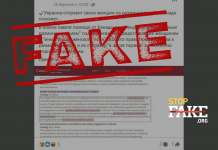
A look at how RT’s chief editor responds to evidence that the network is a political failure
Just a bunch of sore losers and neocons
Simonyan says she was first contacted by The Daily Beast earlier this summer. Claiming to have been “amused,” she says the report leaked to the Americans was likely the “latest ploy” by RIA Novosti‘s final chief editor, Svetlana Mironyuk, whom Simonyan calls a lover of “complex and largely useless intrigues.”
Simonyan insists that there is statistical evidence to prove RT‘s genuine mass appeal. “We order studies of our audience from the most respected American and European companies and we don’t publish a word of this research without first agreeing with them,” she says. Simonyan also argues that one would have to believe YouTube and Google were in cahoots with RT, in order to think claims about its online popularity are exaggerated.
Lamenting the tension with RIA Novosti‘s old staff, Simonyan writes, “It’s a shame when years-old intrigues haunt some people to the degree that they can’t stop themselves from starting and inflating scandals through the tabloid, anti-Russian press in America.” Simonyan holds in especially low regard Michael Weiss, a neoconservative senior editor at The Daily Beast, whom she calls “one of the most successful career russophobes,” who “rose quickly by dumping on Russia and RT.”
The “Russian perspective,” complete with meteorites and Japanese earthquakes
Trying to refute claims that RT‘s YouTube audience comes mostly for disaster footage, Simonyan cites a study by the Pew Research Center emphasizing that the number of views attracted by RT‘s YouTube videos is “far greater than many other well-known sources.” This was never in question, however, though subsequent articles in the Russian press have called attention to the possibility that RT buys views to inflate its traffic.
What Simonyan does not point out about the Pew report is that it actually supports one of the main claims of the leaked RIA Novosti study: namely that “most of Russia Today’s popular videos (68 percent) were not edited news packages in any traditional sense,” but “first-person video accounts of dramatic worldwide events such as the Japanese earthquake.” In other words, RT doesn’t seem to be winning an audience for its on-message content—it’s mission—which Simonyan has described in the past as “giving the Russian point of view on key international issues.”
While the Pew study (conducted in 2012) and the RIA Novosti report (finished in 2013) seem to complement one another, Simonyan cites a third text that appeared in The Washington Post by Robert Orttung, Elizabeth Nelson, and Anthony Livshen of George Washington University. This latter research, carried out in early 2015 (after the Maidan Revolution in Ukraine and annexation of Crimea by Russia), suggests that RT is indeed enjoying some success in appealing to foreign audiences with its Ukraine coverage, though the popularity of its content fluctuates radically with the news cycle. Also, Europeans showed more interest in Ukraine than Americans—not unsurprisingly, given that the Ukrainian crisis unfolded in Europe.
Even the work by Orttung and his team, however, comes to conclusions like this one: “Apparently, the Kremlin has decided that selling Americans on the Kremlin-sanctioned view of the conflict in Ukraine is too challenging a task even for the experienced Kremlin media merchants.”
The unpublished data would blow your mind, probably
When challenging claims that RT exaggerates its television ratings with broad, often questionable interpretations of survey data, Simonyan cites an RT article summarizing a study by Nielsen that supposedly shows RT doubling its audience in seven US cities between May 2014 and March 2014. Critics have expressed doubts about this Nielsen study, however, pointing out that it is strangely unpublished. The same is true of another Nielsen survey Simonyan cites to show the supposedly fast-growing popularity of RT‘s Arabic-language service in the Middle East and North Africa.
Simonyan never addresses the criticism that RT owes its popularity to reports that have little or nothing to do with the network’s political mission. For instance, RIA Novosti‘s research said RT‘s most-watched segments are about “metrosexuals, bums, and earthquakes.” In her response on LiveJournal, Simonyan simply points out that RT‘s traffic is vastly superior to all other television networks on YouTube.
Simonyan also does not respond to those who say RT buys its popularity by broadcasting content that it didn’t record itself. In fact, the Pew study she mentions as proof of RT‘s success on YouTube says this: “The people who shot these videos may not be Russia Today reporters, but the organization acquired the footage and broadcast it, using its own dissemination tools and graphics.”
“A quite efficient scheme”
After presenting her case in defense of RT, Simonyan finishes by alluding to the sinister alliance she detects between American neoconservatives, the US government, and the Russian opposition. In screenshots, she shows how Will Stevens, the spokesperson for the US embassy in Russia, tweeted a link to The Daily Beast story. Soon following suit was opposition leader Alexey Navalny, who was retweeted by former chess grandmaster and oppositionist-in-exile Garry Kasparov, and also by none other than The Daily Beast‘s own Michael Weiss. “It’s a quite efficient scheme for dispersing information,” Simonyan concludes.
By Kevin Rothrock, Meduza





